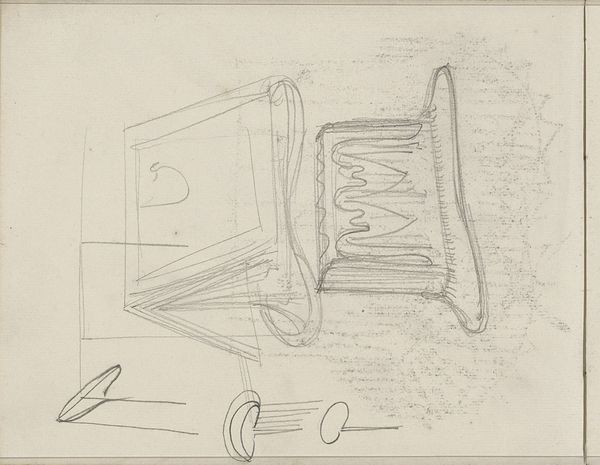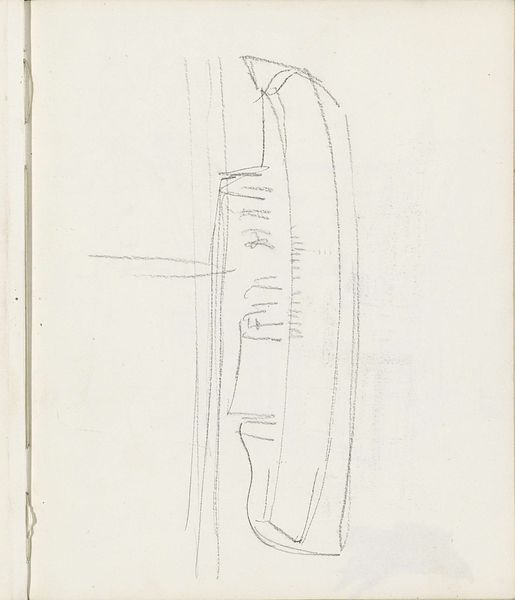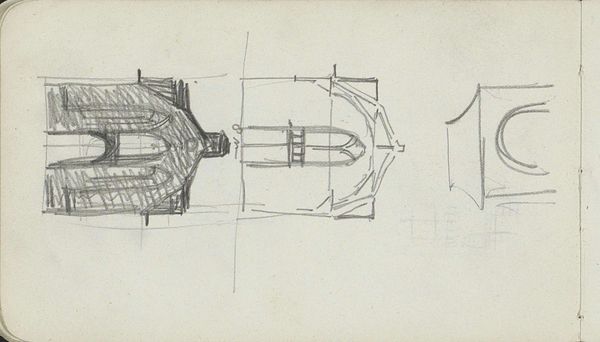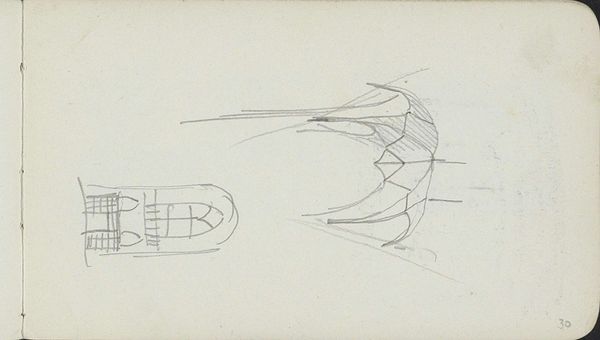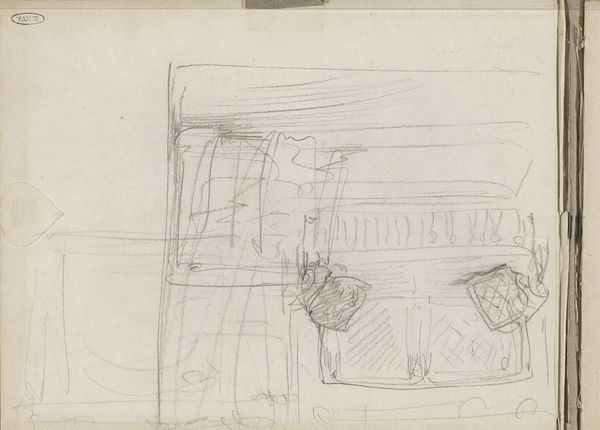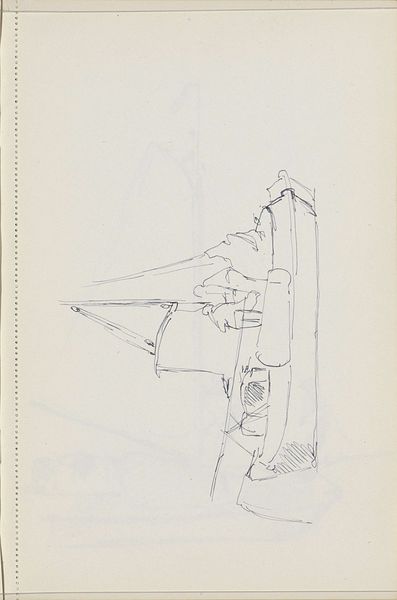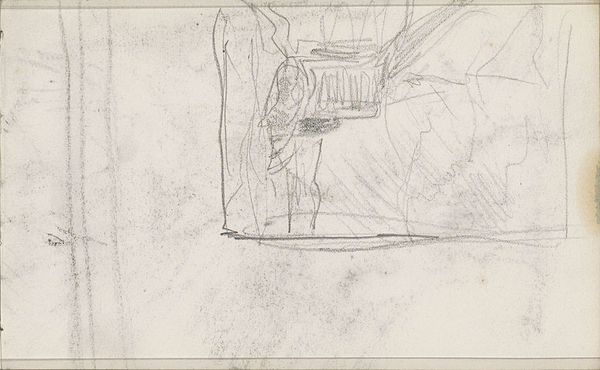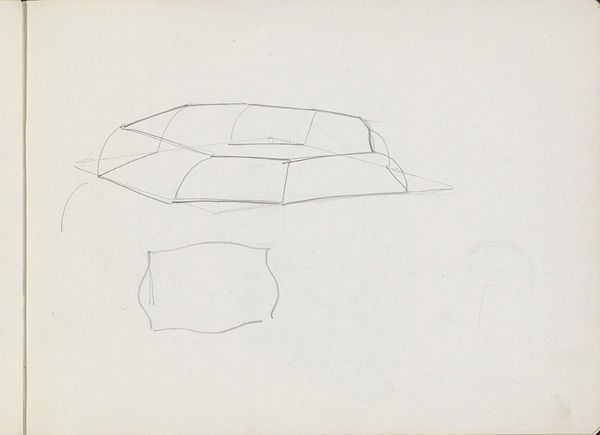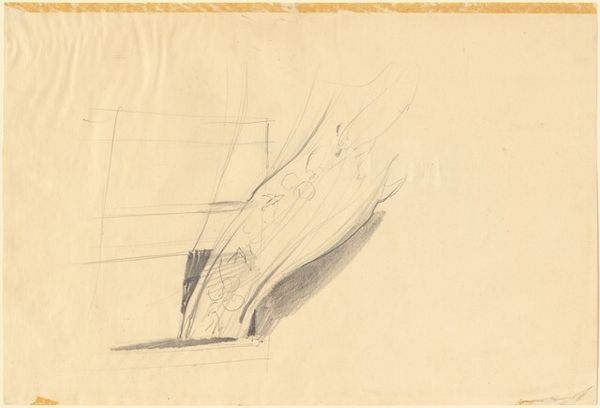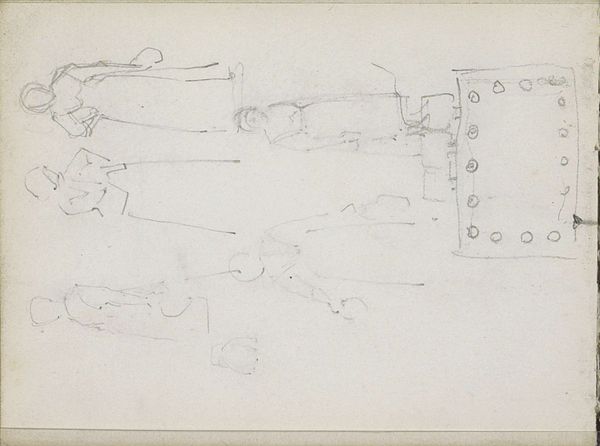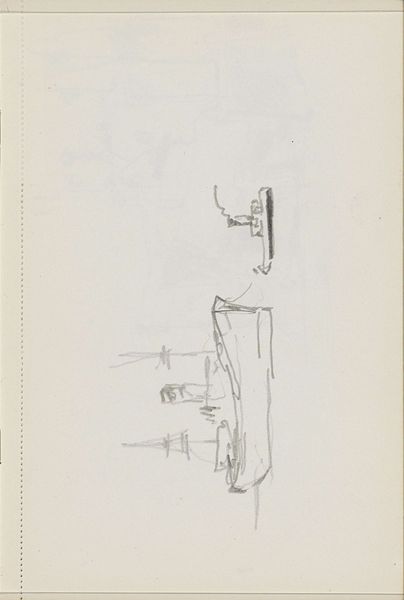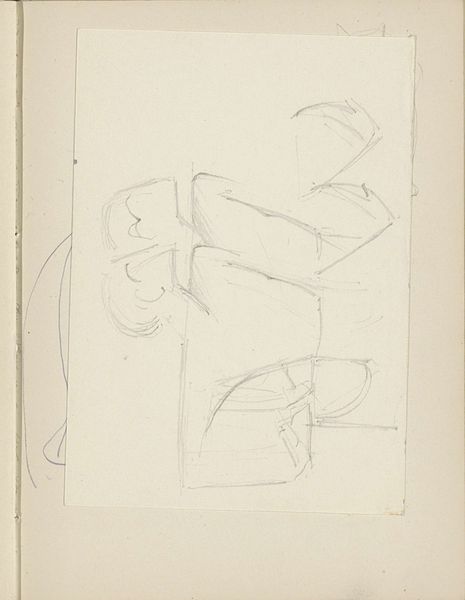
drawing, pencil, graphite
#
drawing
#
art-nouveau
#
sketchwork
#
geometric
#
sketch
#
pencil
#
abstraction
#
graphite
Copyright: Rijks Museum: Open Domain
Curator: This is entitled "Studies", by Carel Adolph Lion Cachet, and it dates from about 1905 to 1910. It’s currently held in the Rijksmuseum, and the materials are pencil and graphite on drawing paper. Editor: Immediately I am drawn to its sense of incompleteness, a series of fleeting impressions rendered in simple lines. It has this ghostly, ephemeral quality to it. What do you make of these particular forms? Curator: The objects depicted seem to hover between the functional and the symbolic, between a rudimentary vessel and pure geometric shape. There’s this interesting dialogue between suggested form and raw abstraction. The repetition of simple lines to denote curvature… it speaks to the inherent symbolism embedded in commonplace objects. Editor: I wonder what was he investigating. The composition invites reflection on consumerism of this era. Everyday objects sketched over and over like this elevate and transform mundane shapes into something worthy of contemplation. Curator: It almost recalls those memory exercises that sought to link mental imagery with spiritual insight. The artist seems to be reaching for something deeper in the shapes. Perhaps trying to distil their inherent spiritual significance. Editor: Or maybe it’s Cachet interrogating mass production’s ability to change society. By emphasizing form over function in consumer objects, does it critique capitalism’s empty pursuit of fleeting pleasures, revealing how quickly utility transforms into waste? Curator: It's tempting to apply that kind of lens but remember the context – the turn of the century was filled with explorations of mysticism and the hidden aspects of reality. I feel a distinct resonance with the symbolism found in other Art Nouveau works. Editor: Still, an aesthetic response doesn’t preclude a political awareness. Art often embodies contradictions of their time. To ignore its critique of consumerism, I think, overlooks the image's complexity. Curator: That push and pull between form and utility resonates, doesn't it? The drawing prompts consideration not just on what we see, but on the deeper significance we project onto these elemental shapes. Editor: Yes. It really challenges us to reflect on the objects around us and consider our complicated relationships with the things we value.
Comments
No comments
Be the first to comment and join the conversation on the ultimate creative platform.
